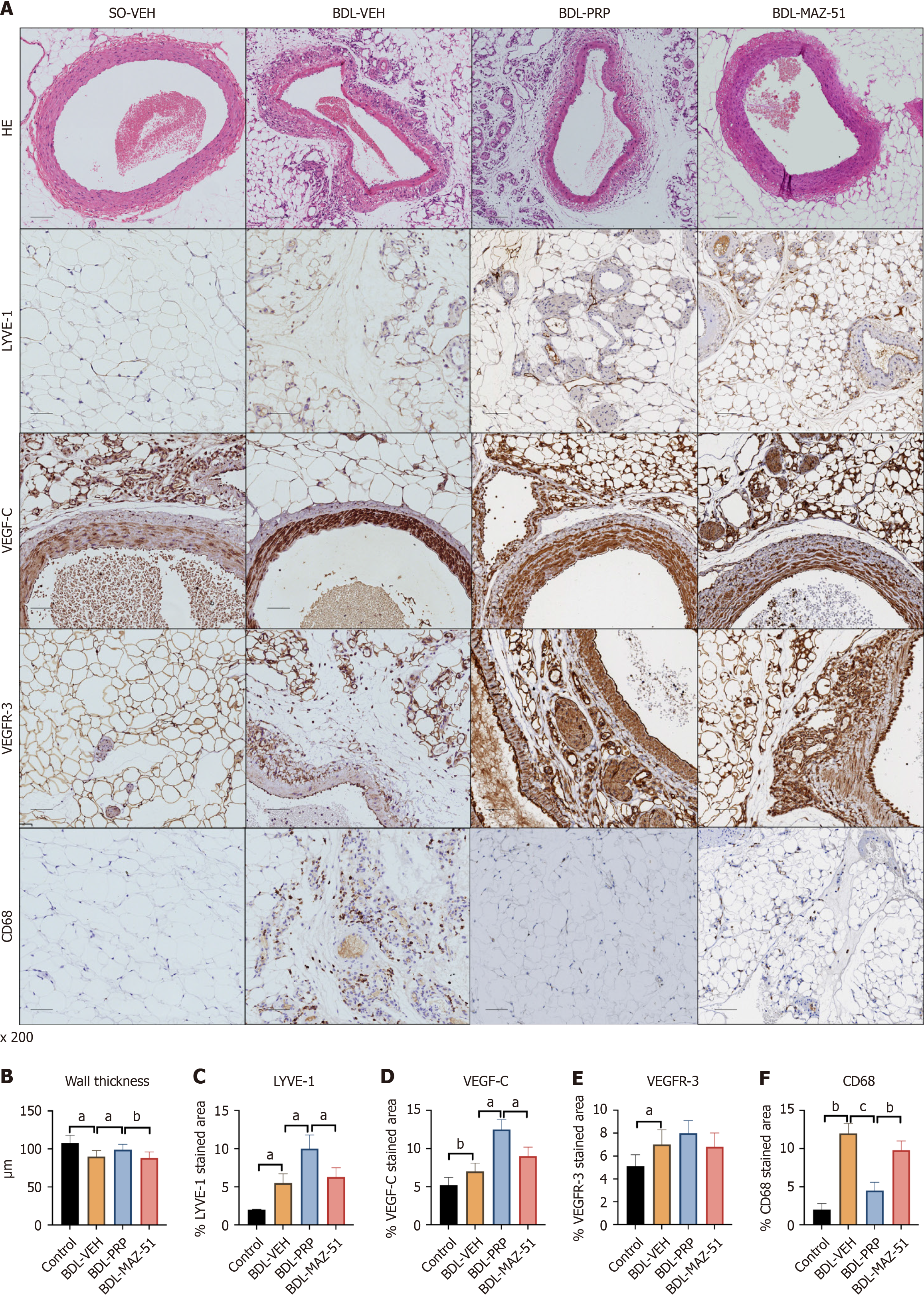Copyright
©The Author(s) 2025.
World J Gastroenterol. Mar 14, 2025; 31(10): 100194
Published online Mar 14, 2025. doi: 10.3748/wjg.v31.i10.100194
Published online Mar 14, 2025. doi: 10.3748/wjg.v31.i10.100194
Figure 8 Inhibition of vascular endothelial growth factor C/vascular endothelial growth factor receptor 3 reverses the amelioration of mesenteric angiogenesis and inflammation by platelet-rich plasma-induced platelets.
A: Representative immunohistochemistry images of hematoxylin and eosin, lymphatic vessel endothelial hyaluronan receptor-1 (LYVE-1), vascular endothelial growth factor C (VEGF-C) and vascular endothelial growth factor receptor 3 (VEGFR-3) and cluster of differentiation 68 (CD68) in the mesentery of the different groups; Quantitative analysis of B: Wall thickness; C: LYVE-1; D: VEGF-C; E: VEGFR-3; F: CD68. The data represent the mean ± SD. aP < 0.05. bP < 0.01. cP < 0.001. BDL: Bile duct ligation; PRP: Platelet-rich plasma; SO-VEH: Sham-operated-vehicle; VEH: Vehicle.
- Citation: Chen M, Zhao JB, Wu GB, Wu ZH, Luo GQ, Zhao ZF, Zhang CH, Lin JY, Li HJ, Qi XL, Huo HZ, Tuersun A, Fan Q, Zheng L, Luo M. Platelet activation relieves liver portal hypertension via the lymphatic system though the classical vascular endothelial growth factor receptor 3 signaling pathway. World J Gastroenterol 2025; 31(10): 100194
- URL: https://www.wjgnet.com/1007-9327/full/v31/i10/100194.htm
- DOI: https://dx.doi.org/10.3748/wjg.v31.i10.100194









